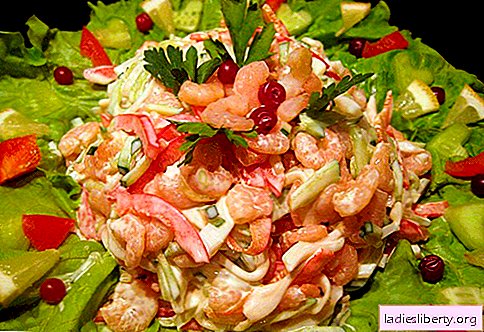
Goldenrod - general description
Goldenrod (Solidágo - strong, healthy) is a perennial herbaceous plant of the aster family (Asteraceae). The stalk is upright leafy, the leaves are alternate, with serrated plates. It has numerous heterogamous collected in paniculate inflorescences, baskets. Inflorescences are racemose, wrapped in cup-shaped, goblet-shaped or ovate leaves. Marginal flowers reed and pistillate, yellow, with a five-toothed nimbus. The fruits - cylindrical achenes with veins - have a crest of hard, rough bristles.
Goldenrod - types and places of growth
In botany, about 80 described species of goldenrod are known, located in a large way in North America. More than 23 species are in Russia. Canadian goldenrod is called the golden rod, it is grown in our country as an ornamental plant for gardens and parks. The plant prefers heavy and moist rich soils. Propagated in two ways - by seeds and division of bushes. It is cultivated in Germany as a dyeing, tannin, medicinal plant, honey plant.
Goldenrod - medicinal properties
The use of goldenrod for medicinal purposes is associated with its many healing properties; it favorably affects various organs. It is very widely used in the treatment of dermatoses and skin diseases - purulent wounds, tumors, abscesses. Renal abnormalities, involuntary urination, diseases of the bladder, dropsy, bleeding gums, urolithiasis, impaired liver function - this is not an exhaustive list of those diseases where gold rods can be useful. The plant perfectly stimulates the metabolism, helps with gout and cleanses the blood.
Goldenrod - dosage forms
For medicinal purposes, the aerial parts of plants are harvested - grass, mainly the tops of stems and inflorescences. The roots practically do not use. Fresh mashed goldenrod leaves are applied to the wound, the grass is dried in the shade. Dried flower powder is used for antiseptic purposes.
Goldenrod - recipes
- Decoction for the treatment of chronic nephritis and pyelonephritis, inflammatory processes in the kidneys: pour 2 tablespoons of goldenrod, pour 0.5 liters of water, keep in a water bath for 5 minutes on low heat. Leave for 1 hour, filter, drink half a cup before meals, 3-4 times a day. The same solution can treat kidney stones.
Treatment of prostate adenoma: Pour a tablespoon of goldenrod with a glass of cold water, preferably at night, strain in the morning. Drink in small portions all day before meals.
Treatment of skin diseases (psoriasis, eczema, cutaneous tuberculosis):
- An excellent wound healing agent is the goldenrod bath. Boil 50 grams of goldenrod in 10 liters of water, insist 2 hours, add to the bath.
- Oil with a golden rod: grind the golden rod into powder (only flowers), mix with olive or sea buckthorn oil (can be sesame). Affected areas are simply smeared.
Goldenrod - contraindications
Goldenrod can be attributed to moderately poisonous plants, so care must be taken when using it. Overdose is not advisable. Edema of the kidneys and renal failure make the use of the gold rod for prophylactic purposes useless. In case of exacerbation of kidney diseases, it is recommended to first remove the acute condition, and only after that start treatment with goldenrod. The use of the plant is contraindicated in glomerulonephritis. In general, the plant is well tolerated, has no other contraindications and is absolutely harmless.











